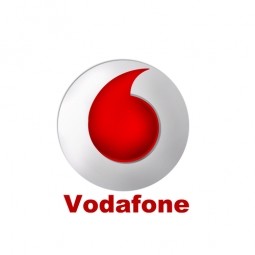Case Studies.
Add Case Study
Our Case Study database tracks 18,927 case studies in the global enterprise technology ecosystem.
Filters allow you to explore case studies quickly and efficiently.
Download Excel
Filters
-
(4)
- (2)
- (1)
- (1)
-
(3)
- (3)
-
(3)
- (3)
- (2)
- (1)
- (3)
- (1)
- (2)
- (1)
- (4)
Selected Filters

|
GPRS Mobile Network for Smart Metering
Around the world, the electricity supply industry is turning to ‘smart’ meters to lower costs, reduce emissions and improve the management of customer supplies. Smart meters collect detailed consumption information and using this feedback consumers can better understand their energy usage which in turn enables them to modify their consumption to save money and help to cut carbon emissions. A smart meter can be defined in many ways, but generally includes an element of two-way communication between the household meter and the utility provider to efficiently collect detailed energy usage data. Some implementations include consumer feedback beyond the energy bill to include online web data, SMS text messages or an information display in consumers’ premises. Providing a cost-effective, reliable communications mechanism is one of the most challenging aspects of a smart meter implementation. In New Zealand, the utilities have embraced smart metering and designed cost effective ways for it to be implemented. The New Zealand government has encouraged such a move to smart metering by ensuring the energy legislation is consistent with the delivery of benefits to the consumer while allowing innovation in this area. On the ground, AMS is a leader in the deployment of smart metering and associated services. Several of New Zealand’s energy retailers were looking for smart metering services for their residential and small business customers which will eventually account for over 500,000 meters when the multi-year national deployment program is concluded. To respond to these requirements, AMS needed to put together a solution that included data communications between each meter and the central data collection point and the solution proposed by Vodafone satisfied that requirement.
|
|

|
Helping Enexis Power Ahead with Smart Meter Rollout
Enexis is an independent grid operator and one of the largest energy distributors in the Netherlands. Working with energy suppliers, it manages 2 million gas and 2.6 million electricity connections to customers in seven provinces, representing approximately one third of the Dutch market. In 2008, a European Union (EU) directive stipulated that 80% of energy customers must be able to monitor energy consumption by 2020. The Dutch government responded by making a legal requirement for energy operators to install smart metering technology in homes. To meet these targets, Enexis will need to deploy approximately 5 million smart meters, each transmitting energy consumption data once a day, every day. Since 2011, Enexis no longer installs conventional meters, every new meter installed in the grid is a smart meter. This means that during the first few years of rollout, smart meters are installed across the grid. To achieve this, Enexis had several options. Routing data via Power Line Connections (PLC) was impractical because, to work effectively, entire districts would have to install smart meters simultaneously. With the initial rollout limited to replacing faulty meters and new installations, this was not viable. Transmitting data via WiFi, another option, would mean home owners needing a guaranteed connection. “Because we install smart meters that are scattered across our distribution network, the most effective solution was GPRS over M2M SIMs,” says Lonneke Driessen-Mutters, Smart Metering Operations Manager at Enexis. M2M SIMs installed in smart meters would be able to transmit data via Vodafone’s comprehensive mobile coverage in the Netherlands, with no homeowner involvement and minimum installation effort. Enexis invited a number of mobile communications suppliers in the Netherlands to tender. After careful consideration, Vodafone was selected based on cost and service commitments. In addition, Enexis already had a relationship with Vodafone, as they provide approximately 3,000 of the company’s voice and data connections, so they knew the service they could expect. “We’re owned by local government, so our money is public money. The solution had to be cost effective as we have to be careful what we spend,” says Driessen-Mutters.
|
|

|
Smart energy by Mobisol
A key aspect of Mobisol’s business model is ensuring that the agreed installments are paid on time. Therefore, the solar home systems needed to be fitted with SIM cards that cannot be removed without destroying the devices. If payments are not made the system can be switched off remotely. Mobisol was looking for a mobile partner that was able to provide SIMs and mobile coverage in the across the east African countries in which it operates.
|
|

|
Energy Savings of Up to 40% with Energy Data Management solution
Faced with rising global energy costs, and determined to fulfil its obligation to minimise its carbon footprint, Vodafone decided it needed a solution that would manage the way it consumes energy more proactively. To get the intelligence and global scale that it needed, Vodafone soon discovered it would need to build the solution itself.
|
|

